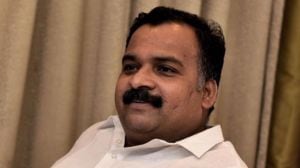Year to the ground
IIP figures indicate 2012-13 may be a failed year,and point to finance ministers constricted options
In the three months from January to March,the monthly indices of industrial production at 0.9,4.3 and -2.8 per cent had translated into a GDP growth rate of 5.3 per cent. The period from April to June has thrown up even worse figures,of -0.9,2.5 and -1.8 per cent. The GDP growth rate for this quarter will then come out to be even lower,at close to 4.5 per cent.
From here,only a 7 per cent plus growth rate of GDP in the next three quarters can pull the Indian economy to the RBI target of 6.5 per cent for this fiscal. There is just no way it will happen. Capital goods production has been contracting for the past 10 months with just one blip in between: it means no segment of the manufacturing sector has any plans for pushing production higher to re-energise growth. In short,since September last year,just about no company has made any plans to buy machinery or any other equipment. Consumers are responding by progressively cutting down their consumption of non-durables. The numbers are worse now than they were a month ago and pretty bad compared to a tepid April. This is a dangerous condition for a growing economy to have swung into. Earlier,a robust set of numbers from Indias services sector made up for the weakness in other sectors. But former finance minister Pranab Mukherjees ill-conceived tax adventure,especially against IT,has taken care of that. Then there is weakness in the importing countries,especially Europe,that even a 25 per cent rupee depreciation cannot reverse.
The options for 2012-13 are constricted. While Finance Minister P. Chidambaram has reiterated that two bad years in a series of good years should not be a measure of a governments performance,it is clear that the bad news isnt going away as this fiscal closes. The window of options for the next fiscal is narrowing already and a large percentage of those that remain would depend on which way government expenditure moves. The choice for the FM,then,is to cut all fiscal costs and hope it will be sufficient for the RBI to cut rates in a big way to make capital cheaper for entrepreneurs. Or,he can decide to aggressively print money to create a fiscal stimulus for the economy. Either way,he can be sure the benefits for the economy will start rolling in only after the general elections in 2014.
- 01
- 02
- 03
- 04
- 05































